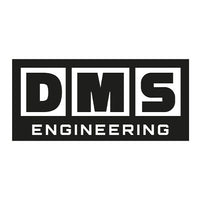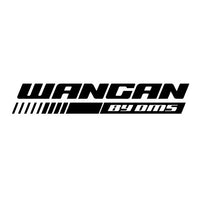When upgrading your vehicle with a body lift kit, the choice of material for spacers plays a crucial role in performance, durability, and overall satisfaction. Let's delve into why HDPE (High-Density Polyethylene) spacers are the preferred option over their aluminium billet counterparts:
1. Material Composition and Strength:
- HDPE Spacers: Crafted from high-strength thermoplastic polymer, HDPE spacers boast an exceptional strength-to-density ratio. Their robustness, combined with resistance to impact, moisture, and chemicals, ensures your lift kit withstands various environmental conditions without compromise. Unlike aluminium, HDPE's flexibility and resilience contribute to a durable and reliable lifting solution. Aluminium also tends to squeak and can be brittle making it a somewhat unreliable material choice.
2. Weight Considerations:
- Advantage HDPE: Opting for HDPE spacers means reducing the overall weight of your lift kit. This reduction plays a pivotal role in preserving fuel efficiency and the handling dynamics of your vehicle, making HDPE spacers an intelligent choice for enthusiasts who value performance and efficiency.
3. Corrosion Resistance:
- HDPE's Unmatched Durability: In environments prone to moisture, chemicals, or salt, HDPE spacers excel. Their superior corrosion resistance guarantees a long-lasting lift, free from the degradation that metals might suffer. This property is especially beneficial for off-roaders and those in harsh climates.
4. Cost and Machinability:
- Economical Efficiency: HDPE spacers are not only cost-effective but also adaptable to complex shapes through an economical molding process. This contrasts with the higher costs associated with machining aluminium billets, presenting HDPE as a budget-friendly alternative without sacrificing quality.
5. Vibration Dampening:
- Ride Comfort with HDPE: One of the standout features of HDPE spacers is their innate ability to absorb vibrations and noise, contributing to a smoother, quieter ride. This advantage is particularly noticeable compared to aluminium spacers, which tend to transmit more vibration and noise.
Aluminium Spacers and their Drawbacks:
Opting for aluminium spacers in a body lift presents a few significant drawbacks. These spacers can induce corrosion, potentially weakening or causing erosion to the bolts, thereby affecting the vehicle's stability. Moreover, they might produce a squeaking noise due to friction against the floor pan, signalling possible wear and tear. Additionally, aluminium spacers are considerably heavier than plastic options, which could negatively influence the vehicle's fuel economy and overall performance. It's crucial to weigh these factors when selecting materials for body lift spacers.
Conclusion:
Choosing HDPE spacers for your body lift kit offers a harmonious blend of strength, weight efficiency, corrosion resistance, cost-effectiveness, and vibration dampening. This makes them not just a viable option but the superior choice for drivers seeking to enhance their vehicle's stance without compromising on performance, durability, or comfort. Embrace the innovation and resilience of HDPE spacers and elevate your driving experience to new heights.



